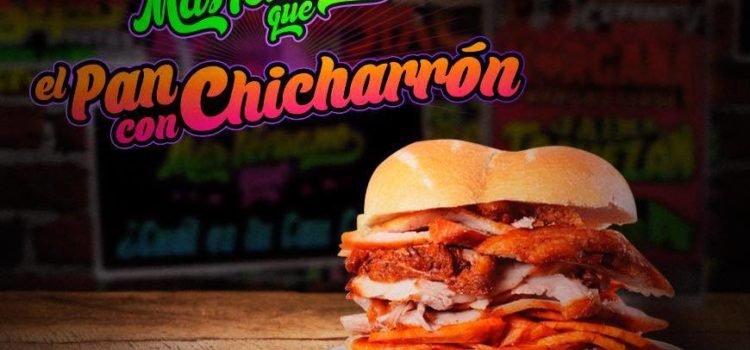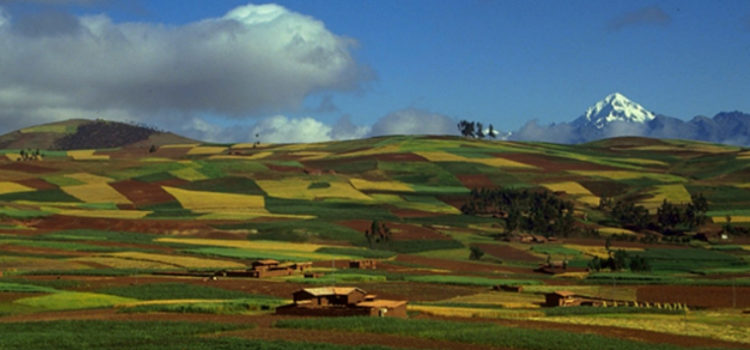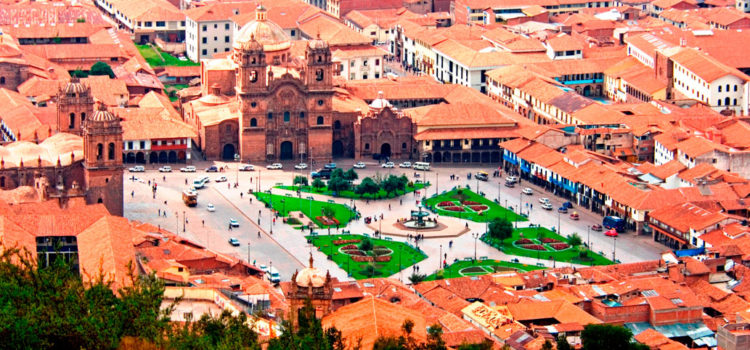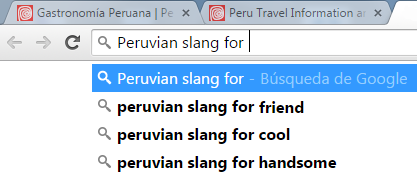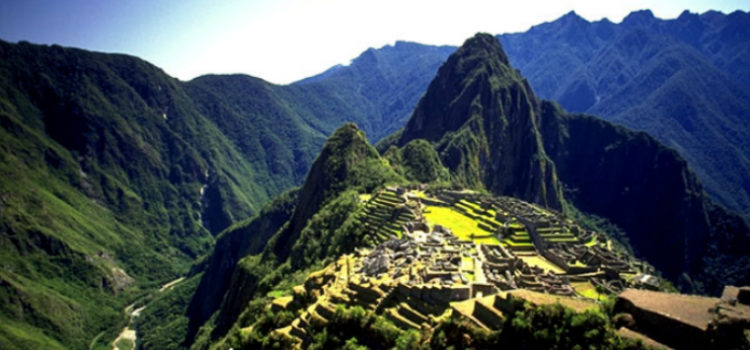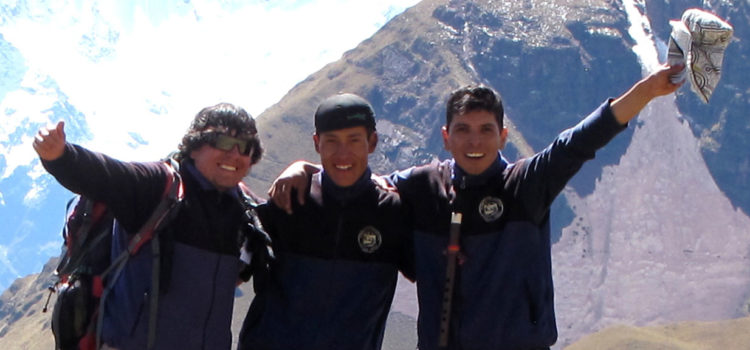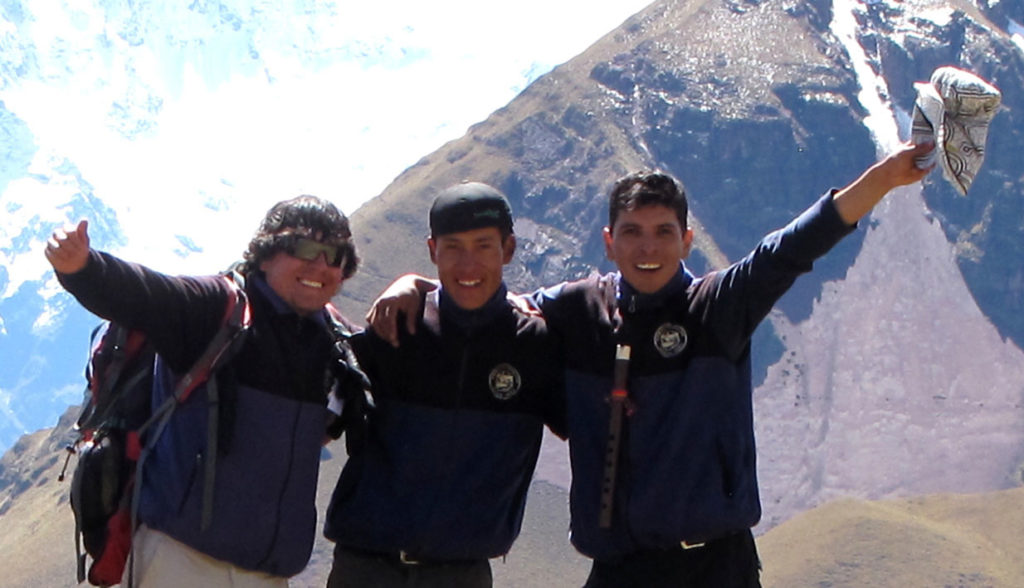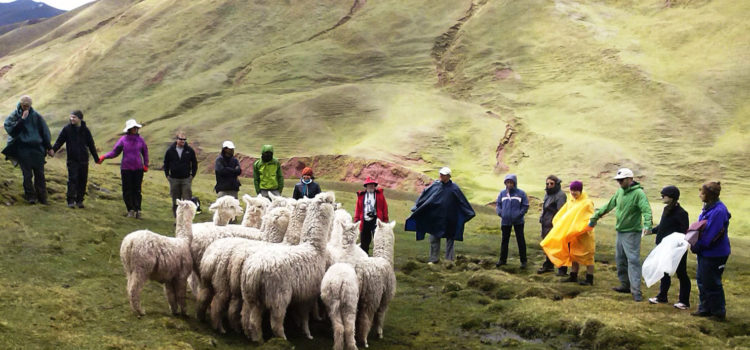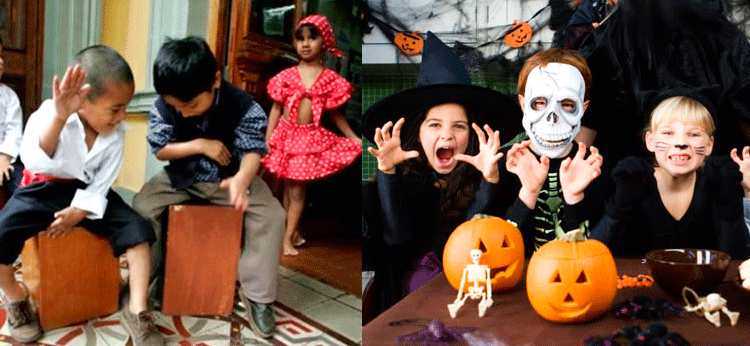Saylla – the Ultimate Chicharrón Challenge

Saylla lies in the South Valley about 15 km or 40 minutes bus ride from the center of Cusco on the way to Puno before arriving to Tipon. Saylla or Los Leones combis go there for 1 sol. When your bus is getting closer a new valley opens in front of your eyes and that is the moment to start looking out for the restaurants. They are situated right on the main road, so as soon as you can see them get off on the next paradero. There are so many open-air restaurants it seems like all the chicharrón cooks agreed to move to Saylla and start a culinary imperium there.
Things to Do in the Sacred Valley
 Stretching along the Vilcanota River, also called Urubamba, the Sacred Valley of the Incas is surrounded by dramatic mountain peaks capped with snow all year long. The river’s name comes from Aymara word Willkanuta, which means ´House of the Sun;´ in Quechua it is called Willkamayu meaning the Sacred River – both original Andean Languages[1]. The Sacred Valley once was an important agricultural, spiritual, and political center for the Inca Empire. Today, due to its lower altitude and warmer climate compared to Cusco, it’s a much sought after destination to relax and acclimatize. The landscape is especially beautiful at its greenest during or after the rainy season.
Stretching along the Vilcanota River, also called Urubamba, the Sacred Valley of the Incas is surrounded by dramatic mountain peaks capped with snow all year long. The river’s name comes from Aymara word Willkanuta, which means ´House of the Sun;´ in Quechua it is called Willkamayu meaning the Sacred River – both original Andean Languages[1]. The Sacred Valley once was an important agricultural, spiritual, and political center for the Inca Empire. Today, due to its lower altitude and warmer climate compared to Cusco, it’s a much sought after destination to relax and acclimatize. The landscape is especially beautiful at its greenest during or after the rainy season.
Things to Do in Cusco
First Adjust to the Alitude. Here in Cusco we are 3,300m above sea-level, so it is best to spend the first day resting. Re-hydrate, limit alcohol intake, and eat slowly, in order to best acclimatize. Chewing coca leaves or one morning cup of coca tea are known remedies for the lower oxygen levels in the altitude. Relaxing camomile tea is recommended for the rest of the day. Had a rest? Now you are ready for Cusco!
Get a Taste of Uniquely Peruvian Expressions
After our blog about Runasimi/Quechua we realised that there are many uniquely Peruvian Spanish jerga (or slang) expressions that were too funny not to share. Enjoy making yourself sound local. Here is our finest and 100% locally verified selection:
Best Time to Visit Machu Picchu and What not to Miss
 If you want to avoid the downpours and the biggest crowds the ideal time to visit Machu Picchu is right before or right after the rainy season in September or May.
If you want to avoid the downpours and the biggest crowds the ideal time to visit Machu Picchu is right before or right after the rainy season in September or May.
Rainy season: October to mid-April (including the warmest time: November to March)
Dry season: Mid-April to September
Best time: May – September
Ruben, Congratulations on Your Graduation as a Mountain Guide!
Latest Alpaca News – Nobody Escapes Getting a Trim
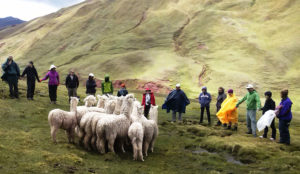 It’s been quite some time since November 2014 when the first herd of donated alpacas slowly walked into their old-new home near Cusco, Peru. The project began in 2013 with an expertly study of the environment and especially the local grasses. It was most important to make sure that the Andean Camelids originally from Cordillera Vilcanota will prosper before reintroducing them near different communities in the Cordillera Vilcabamba. The necessary funds have been collected thanks to the successful partnership with Dragoman – an overland travel agency from the United Kingdom. Finally the alpacas have returned to the area after having been extinct for 200 years. To this date there are total of 3 herds of alpacas in the mountains and this year 11 new alpaca babies were born. The more animals the better the genome of the species will be preserved and the further they will spread over their original habitat.
It’s been quite some time since November 2014 when the first herd of donated alpacas slowly walked into their old-new home near Cusco, Peru. The project began in 2013 with an expertly study of the environment and especially the local grasses. It was most important to make sure that the Andean Camelids originally from Cordillera Vilcanota will prosper before reintroducing them near different communities in the Cordillera Vilcabamba. The necessary funds have been collected thanks to the successful partnership with Dragoman – an overland travel agency from the United Kingdom. Finally the alpacas have returned to the area after having been extinct for 200 years. To this date there are total of 3 herds of alpacas in the mountains and this year 11 new alpaca babies were born. The more animals the better the genome of the species will be preserved and the further they will spread over their original habitat.
Everything You Always Wanted to Know about Quechua
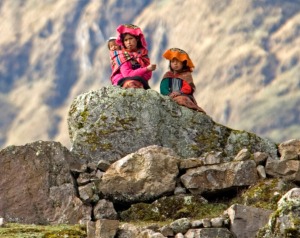 Most importantly Quechua speakers refer to their mother tongue as runasimi, which means ‘human speech’.[1] It is one of the 47 original languages spoken in Peru. Quechua is also spoken in Bolivia, Ecuador, Colombia, Argentina and Chile.[2] With the Inca conquest of more and more territory Quechua spread in a similar way Latin did in Europe with the Ancient Roman expansion. ‘Today there are approximately 24 dialects of Quechua […]. All of these varieties combined are spoken by approximately eight to 10 million people, making Quechua the most widely spoken indigenous language in the Americas.’ [3]
Most importantly Quechua speakers refer to their mother tongue as runasimi, which means ‘human speech’.[1] It is one of the 47 original languages spoken in Peru. Quechua is also spoken in Bolivia, Ecuador, Colombia, Argentina and Chile.[2] With the Inca conquest of more and more territory Quechua spread in a similar way Latin did in Europe with the Ancient Roman expansion. ‘Today there are approximately 24 dialects of Quechua […]. All of these varieties combined are spoken by approximately eight to 10 million people, making Quechua the most widely spoken indigenous language in the Americas.’ [3]
Here in Cusco Quechua is more than alive and kicking. You can hear it talking on the cell phone while going by bus. You can see it advertising Cusqueña the local beer from Cusco on TV. And also Oro (Gold) bubble-gum yellow soda in several witty TV commercials as if from the Inca times – don’t miss the twelve-angled pizza delivery one. Quechua studies at a university. It is taught in schools, language institutes and universities in Peru. Even foreigners living in here are learning this Andean language in workshops and courses organized by institutions like Dirección Regional de Educación de Cusco. What’s more Quechua is also taught at universities and language institutes outside of Cusco, outside of Peru and even outside of South America.
Pumpkin or Zapallo? Halloween à la Cusco

Did you know? 31st October is traditionally Día de la Canción Criolla – Creole Song Day in Peru. This event was established President Manuel Prado Ugarteche in 1944, in order to celebrate Peru’s iconic creole music and the musicians of especially Afro-Peruvian, but also Andean origins. Over the past 20 years, especially in Cusco with the growing number of expats, the original music celebrating tradition has been mixing with the foreign jack-o’-lanterns and scary costumes. At the end of October shops and supermarkets dress into spider webs and black and orange balloons. Tiny plastic baskets in forms of skulls and pumpkins – so that the children have somewhere to put their caramelos – appear among the groceries.
31st October is here, the sun sets and another busy work day is over. One steps outside. ‘Boo!’ Witches and fairies… black pointed hats, pumpkins and glittering lilac or pink wings everywhere.
Lares – Alternative Route to Machu Picchu
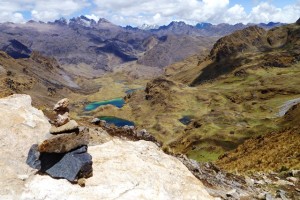 The remote Lares Valley is an excellent trekking place if you want to escape the crowds, clicking of cameras and experience genuine encounters with the local people.[1]
The remote Lares Valley is an excellent trekking place if you want to escape the crowds, clicking of cameras and experience genuine encounters with the local people.[1]
Remote Andean Villages
Breathtaking Landscapes
Hot Medicinal Springs
No Crowds or Overly-Traveled Trails
Personalized Service, Quality, Equipment, and Excellent Meals
‘Situated among the eastern slopes of the Andes and the northern sector of the Cordillera Urubamba, the Lares Valley is a wondrous place of brilliant glacial lakes and sub-tropical valleys filled with a rich assortment of vegetation and wildlife’ [2] with glaciers in the background. Small Quechua-speaking communities live in the Lares Valley continuing centuries old the farming, herding and weaving traditions of their ancestors.

